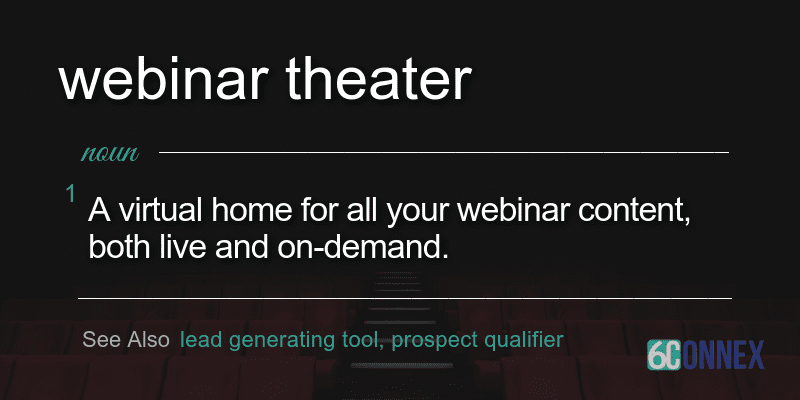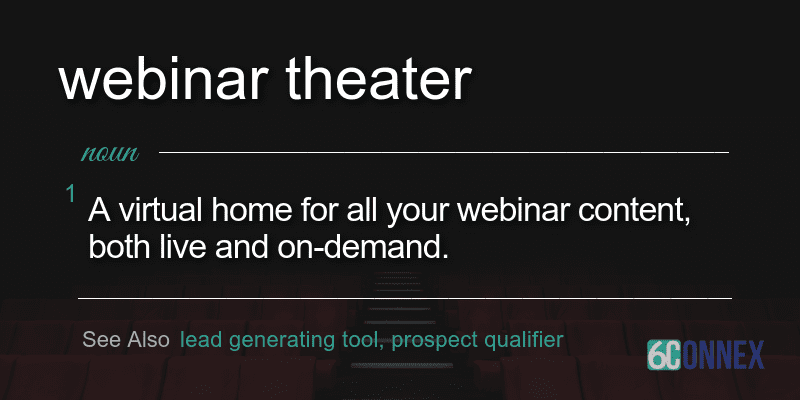A Webinar Follow Up Strategy That Always Generates Leads
Joakim Jönsson
Dec 20, 2024 9:00:00 AM

Hosting a successful webinar is only half the battle; the real magic happens after the event. A well-executed webinar follow-up strategy is the secret to transforming your audience's interest into actionable leads. Without a clear plan in place, all the hard work of organizing, promoting, and delivering the webinar could fall flat, leaving potential opportunities untapped.
Whether your goal is to nurture new prospects, convert engaged attendees, or re-engage those who couldn’t make it, a strategic follow-up approach ensures you’re maximizing every touchpoint. In this blog, we’ll walk you through a step-by-step webinar follow-up strategy designed to generate leads consistently. From crafting personalized messages to leveraging multi-channel outreach, we’ll cover everything you need to keep the momentum going long after the webinar concludes.
Ready to turn your webinars into a lead-generation powerhouse? Let’s dive in!
A great follow-up webinar strategy actually starts long before your event goes live. Setting the stage with effective pre-webinar preparation helps to ensure your follow-ups will be targeted, personalized, and meaningful. Now, let's look at three key steps in laying the groundwork for successful follow-ups:
Your registration form is a goldmine for insights that could shape your post-webinar engagement. Ask questions that can give you an idea of your audience's goals, pain points, and preferences. Examples of useful data include but are not limited to the following:
This will not only help you craft your follow-ups, but it will also inform your webinar content to meet audience-specific needs, making the session all the more engaging and relevant.
Not all registrants are created equal, and a one-size-fits-all approach simply won't resonate. By segmenting your audience in advance, you can create personalized follow-ups that speak directly to their unique interests and behaviors.
Consider segments such as:
Pre-webinar segmentation ensures that when it's time to follow up, your messaging feels personalized and relevant increasing the likelihood of conversion.
The value proposition with which you sell the registration is not only a tool for securing attendees but also the very backbone of your follow-ups. You will want to reinforce this value in every touchpoint post-webinar to remind them why further engagement with your brand is of benefit.
Example:
By more clearly defining what the webinar is worth and delivering on your promise, you build trust and provide an easy transition into your follow-up strategy. In this way, set yourself up in the best way to create resonating follow-ups with your audience for better connections and lead generation.
Timing plays a critical role in the success of your webinar follow-up strategy. The key is to strike while the iron is hot—engage with your audience while the webinar content is still fresh in their minds. At the same time, a thoughtful cadence ensures your messaging remains relevant and consistent over time. Here’s how to structure your follow-up schedule for maximum impact:
The first 24 hours after your webinar are crucial. Your audience is most likely to remember the event, so this is the best time to re-engage.
Key actions to include:
Once the initial excitement has subdued, it's time to nurture your leads with meaningful follow-ups. This is a great time to dive deeper into your audience's needs and present tailored solutions.
Key actions to include:
Not all webinar leads will immediately close. For the rest who take longer, be sure to have a long-term approach to keep them within your sights.
Activities to include:
Through this process, integrate immediate, medium-term, and long-term follow-up for an all-inclusive webinar follow-up strategy to engage the audience, nourish the leads, and increase conversions with the passage of time.
A successful follow-up webinar strategy doesn't rely on one method of communication. You will be able to meet your audience where they are using multiple channels to create more opportunities for engagement and conversion. Here's how you integrate email, social media, and personal outreach into your follow-up efforts:
Email is the cornerstone of any follow-up strategy, offering a direct and efficient way to engage your audience.
Key practices include:
Social media is a great place to nurture relationships and keep your brand top of mind.
Best practices include:
Attendees who present the greatest level of engagement, or who match the criteria of an ideal customer, have proven to be the perfect prospects for personal outreach.
Following are some effective methods for follow-through:
This multi-channel approach lets you engage leads in various meaningful ways, making sure your follow-up strategy for the webinar is holistic and efficient. Each channel reinforces the others, creating a cohesive experience that moves leads closer to conversion.
After a webinar, you create e-mail campaigns, keep in touch with prospects, or repurpose the content into other content mediums, among other webinar follow-up best practices. And if you’re like most, you probably post the on-demand link somewhere on your website and watch views trickle in over time. But what if there was another strategy to generate leads from your webinar LONG after it is over?
The trick to getting more leads from your webinars is by surfacing the older webinar topics to both new and old prospects, in one place. A webinar theater is a virtual home for ALL your webinar content, both live and on-demand. With a theater, you can drive registrations for new individual webinars, while providing access to a library of existing resources from past webinars.

You don’t want to repeat yourself, but hey, that presentation from February may be just what’s needed in October to push a prospect to close. Consider adding a webinar theater for all the webinars you have hosted, and the ones you will host in the future, in one place.
With a theater, you can let your marketing program cross-pollinate while your prospects self-select the content they need in the theater you set up. This way, you can continue qualifying prospects for webinars done in the past.
Adding the above features to your current vault of valuable content takes your lead generation through webinars to a whole other level.
Posting your webinars online is a great first step in repurposing your content and getting more value. However, the above-mentioned features from a webinar theater give some added bonuses to your valuable content for lead generation.
You have limited time and resources, so making the most of every piece of content is critical. If you can drive more views for your on-demand content, you can engage more customers and prospects, squeezing more ROI from each webinar campaign and stretching your budget just a bit further.
With real-time analytics and reporting, your sales team has 24/7 access to data from virtual attendees. In the theater, you can see where attendees are clicking and what information they are interested in – all to help you qualify prospects and nurture leads more easily after the webinar has already been live.
Using webinars as part of a content marketing strategy is increasingly popular because they allow you to demonstrate thought leadership and interact with audiences to create engagement, which you can measure through unique tracking capabilities.
If you have webinar content that can act as a lead-generating tool long after the live date, then try setting up a webinar theater for your content today. See how your webinars will look when you use the 6Connex virtual event platform with video conferencing in a live demo.
6Connex is the leading provider of in-person, hybrid, and virtual event technology for enterprises worldwide. Our cloud-based product portfolio includes event management tools, in-person event apps, virtual venues, webinars, learning management, and more.
From internal meetings to large scale conferences, we allow you to engage and transform big ideas into real-world results.
425 Soledad St.
Suite #500
San Antonio, TX 78205
1.800.395.4702
Australia: +61.2.72294013
Brazil: +55.11.4375.3555
United Kingdom: +44.20.37447284
United States: +1.210.890.5769